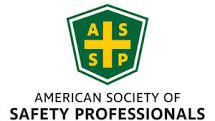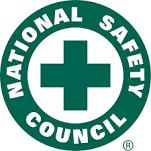For Manufacturers Struggling with Labor Shortage, Time to Review Background Check Processes
As COVID-19 restrictions continue to relax, manufacturers are facing an ever-tightening labor market. Amidst supply-chain disruptions and computer chip shortages, human capital is proving to be increasingly scarce. Many manufacturers are struggling to fill open positions.
While some manufacturers are turning to automation as a solution to the labor shortage, other companies are grappling with the decision of whether to hire workers they may have traditionally excluded from manufacturing positions, such as workers with a history of criminal convictions or who test positive for medical or recreational marijuana use in states where it might still be permissible to do so.
“Ban the Box”
Some jurisdictions have enacted “ban the box” legislation, designed to remove criminal history as a barrier to employment. Such laws require employers to consider qualifications first when considering a person’s eligibility for employment. Practically, a “ban the box” legislation requires employers to assess when in the application process they can ask job applicants about prior criminal records. Some statutes permit the inquiry after the first in-person interview, for example, while other jurisdictions require waiting until after an employer makes a conditional job offer. The Fair Chance Act, which takes effect December 20, 2021, prohibits federal contractors from asking job applicants about criminal records before extending a conditional job offer.
Still, employers have to be mindful of equal employment opportunity concerns when conducting background checks, especially for criminal history. In the past, the Equal Employment Opportunity Commission (EEOC) has been concerned that even if an employer has a job-related reason for a background check, such a practice may tend to have a disparate impact on certain minority groups. Employers are always cautioned to review existing “neutral” policies to ensure they do not have a disproportional negative impact on a particular group, to minimize risk of discrimination claims.
An additional best practice for employers making decisions based upon a criminal history record is to conduct an individualized assessment (and certain jurisdictions have mandated this step). The EEOC, in its 2012 guidance, introduced the “Green factors” by stating that employers can support a practice that potentially otherwise has a disparate impact by showing they considered:
The nature and gravity of the criminal offense(s);
The time that has passed since the conviction or completion of the sentence; and
The nature of the job held or sought.
See Green v. Missouri Pacific Railroad, 549 F.2d 1158 (8th Cir. 1977).
An employer also must consider the many federal, state, and local laws impacting the decision-making process, some of which mandate individual assessments or notices.
Businesses conducting background checks using third-party consumer reporting agencies also must comply with the Fair Credit Reporting Act (FCRA). The FCRA requires companies to follow certain technical “consent and standalone disclosure” requirements prior to obtaining a background check report for an applicant. FCRA also addresses the steps manufacturers must take in the event of an “adverse action” based upon a background check report.
Marijuana
Manufacturers may shy away from hiring employees who test positive for marijuana use out of safety concerns. While employers may still prohibit impairment and use during work hours, some states prohibit basing employment decisions on marijuana use during non-work hours, and others prohibit pre-employment marijuana tests.
Medical marijuana presents another challenge, as some states may bar employers from utilizing positive tests based on medical marijuana usage for adverse job actions.






